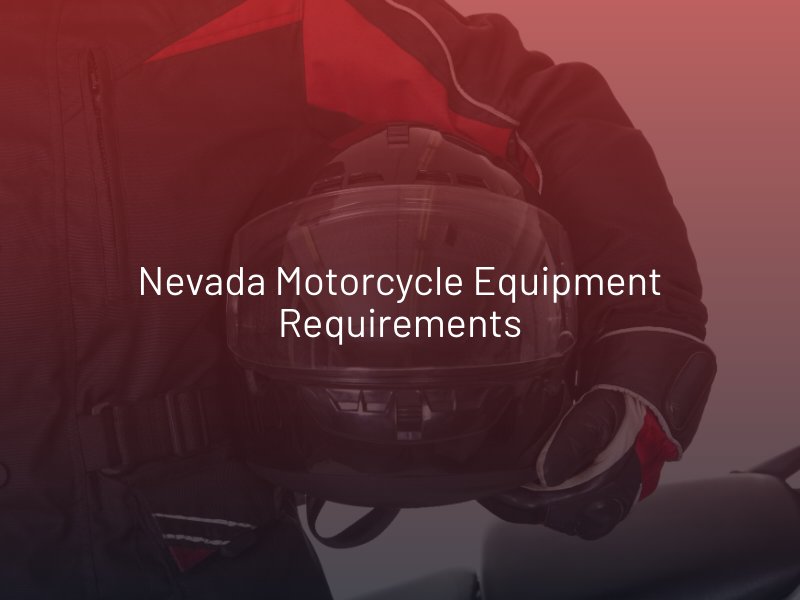Nevada Motorcycle Laws
A leading cause of motorcycle accidents in Nevada is traffic law violations. Here is an overview of the state’s motorcycle laws that are designed to ensure the safety of riders and the general public on the roads and limit personal injuries in Los Vegas and the rest of Nevada.
Motorcycle Licensing and Registration in Nevada
To legally operate a motorcycle in Nevada, you must obtain a Class M license. Aspiring riders must typically begin by getting a Nevada Driver’s License or permit, as it is a prerequisite for a motorcycle endorsement. Individuals can then apply for a Class M license by passing both a written knowledge test and a riding skills test. The written test assesses understanding of motorcycle laws and safety, while the skills test evaluates practical riding abilities. Alternatively, riders can enroll in a Nevada Motorcycle Safety Program (MSP) course, which, upon successful completion, exempts them from the skills test.
Nevada’s Helmet Laws
Nevada has a universal helmet law that requires all riders and passengers to wear helmets at all times. All helmets must also be approved by the U.S. Department of Transportation because they have been tested and provide the highest level of protection.
Insurance Requirements in Nevada
Motorcyclists must purchase motorcycle insurance before riding. The minimum required by Nevada law is:
- $25,000 for bodily injury liability for one person
- $50,000 for bodily injury liability for more than one person
- $20,000 for property damage liability per accident
Liability insurance does not pay for your expenses if you are responsible for a collision. However, you can purchase optional forms of coverage, such as collision insurance, which will pay for the repairs to your bike regardless of who is at fault for an accident.
Nevada Motorcycle Equipment Requirements
Beyond helmets, there are other equipment regulations in place to enhance safety. Motorcycles must have the following:
- One headlight, at least
- Front and rear brakes
- Electric turn signals (if manufactured after 1972)
- A rearview mirror on each handlebar
- Horn
- Muffler
- Fenders on front and back wheels
- Footrests, for passengers too
- A rear reflector visible from 300 feet and mounted 20 to 60 inches above the ground
- Red taillight visible from at least 500 feet
- Brake light that is visible from at least 300 feet in daylight
Handlebars cannot extend further than six inches beyond a rider’s shoulders when sitting.
Restrictions for Riders Under 18
For motorcyclists under 18 in Nevada, there are specific restrictions in place to enhance safety and ensure responsible riding. Minors are required to obtain and hold a motorcycle instruction permit for at least six months. During that time, they must also complete 50 hours of supervised experience and document it on the DMV drive log. A motorcycle safety course must also be completed, but if no course is offered within 30 miles of your home, you can complete an additional 50 hours of supervised experience. Minors with a motorcycle instruction permit can only ride during daylight hours and cannot carry passengers or drive on freeways and other high-speed roads.
Riding Regulations
Like any other vehicle on the road, motorcycles are subject to traffic regulations. Motorcyclists are expected to follow all standard traffic rules, including obeying traffic signals, signs, and right-of-way guidelines. Also, lane-splitting in Las Vegas, the practice of riding a motorcycle between lanes of slow-moving or stopped traffic, is illegal.
Have You Been Injured?
Drivers of other vehicles are obligated by law to respect the rights of motorcyclists on the road. If you have been injured in an accident caused by another party’s negligence, you have the right to hold them accountable. Speak to an experienced and trusted Las Vegas Motorcycle Accident Lawyer today for legal guidance.
